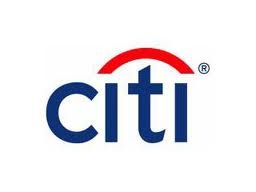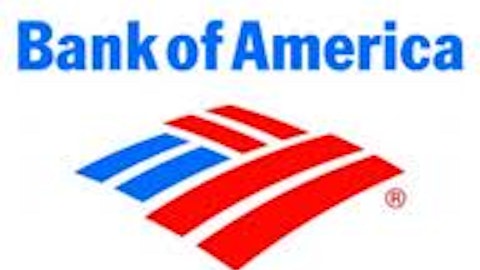
Citigroup Inc (NYSE:C) posted earnings of $1.25 a share ($3.89 billion), which beat expectations of $1.17 a share and was up from $1 a share ($3.08 billion) last year. Revenue from fixed income markets was up 18% and up a whopping 68% for equity markets. Citigroup Inc (NYSE:C)’s profits were up 26% year over year as loan losses narrowed. Another plus is that Citigroup Inc (NYSE:C)’s Basel III Tier 1 capital ratio rose to 10% from 9.3%.
Unlike Wells Fargo & Co (NYSE:WFC), which saw its revenue rise from $21.3 to $21.4 billion in its latest quarter, Citigroup Inc (NYSE:C) saw some strong top line growth. For Citigroup Inc (NYSE:C)’s latest quarter, revenue was up 12% year over year to $20.48 billion. In the quarter before, Citigroup posted a 30% increase in profit and a 3% increase in revenue.
Overseas
Citigroup is focusing more on its overseas operations and makes over 50% of its profits overseas. North America made Citigroup $2.13 billion in its latest quarter followed by Asia at $1.07 billion, Europe, the Middle East, and Africa at $1.04 billion, and Latin America at $900 million.
Citigroup saw huge gains in Europe, the Middle East, and Africa, with income rising by 51% year over year. In Latin America, Citigroup saw an 8.7% increase in profits and in Asia, a 10% increase. The new CEO of Citigroup who replaced Vikram Pandit, Michael Corbat, has said he wants to continue the push into emerging markets.
Value
Corbat wants to cut costs by $900 million in 2013 and increase that to $1.3 billion in 2014. Part of that is being done by cutting 11,000 jobs that Citigroup doesn’t see as vital. Another part is by eventually reducing legal costs associated with the financial crisis.
Citigroup trades at a PE of 16.3 and at 0.83 times book value. With a long term growth estimated at 15%, cost cutting efforts boosting margins, and a push into emerging markets, Citigroup could easily trade at book value. That implies 20% upside from these levels, which seems easily doable.
Gold in that mans Sachs?
Probably not, as Goldman Sachs Group Inc (NYSE:GS) fell 1.7% after reporting earnings and revenue that both beat estimates. Goldman Sachs Group Inc (NYSE:GS) posted earnings of $3.70 a share ($1.93 billion), up sharply from $962 million last year. That is an increase of just over 100%. On the revenue side, Goldman saw a 30% jump in revenue to $8.61 billion.
This wasn’t enough to impress Wall Street, which sent Goldman shares down a tad. Investors are worried that rising interest rates and increased levels of regulations are going to slow down Goldman’s growth. As rates rise the value of Goldman’s bond holdings fall and clients are less likely to jump in as they could wait and get a higher yield.
Goldman has a PE (trailing twelve months) of 9.75 and trades at a slight premium to book of 1.10. With EPS growth expected to be around 6% over the next few years, Goldman seems fairly valued at these levels. Goldman used to trade at a fat premium to other banks because of its aggressive capital allocation plans, but with a return on equity of 10.5% Goldman is still clearly in defensive mode. For this reason, it won’t be able to perform like it did before the financial crisis.
Goldman pays out a 1.2% dividend with a low payout ratio of 11.35%. Maybe in the future Goldman will be able to boost its dividend, but other than that Goldman Sachs has a fair amount of headwinds to deal with. With Dodd-Frank around the corner and uncertainty with QE, I wouldn’t recommend buying Goldman Sachs shares at this time.
Wells Fargo
Wells Fargo & Co (NYSE:WFC) was another bank to beat earnings, posting EPS of $0.98, which beat expectations by $0.05 per share and was up 20% year over year. Revenue was a slight beat as well, coming in at $21.4 billion, which is slightly higher than the $21.3 billion posted last year. The fact the revenue grew instead of contracting as expected definitely pleased Wall Street.
Wells Fargo & Co (NYSE:WFC) owns 22% of the mortgage origination market in the US and is the number one player in that market. While Wells Fargo & Co (NYSE:WFC) saw a 3% decline in mortgage related income this quarter, in the future, the mortgage business is going to be a big driver for Wells Fargo & Co (NYSE:WFC).
If mortgage rates keep rising, then the spread for banks between the cost to borrow (through deposits and CD’s) and the mortgage rate goes up. Thus, banks make a lot more money lending in the mortgage market as long as the cost to borrow rises at a slower rate.
According to Freddie Mac, 30-year fixed US mortgages rose from 3.56% to 4.51% in the past year. Over that same time period, CD’s and money market account rates have remained flat. So, mortgage lenders can start making significantly more money now. This will bode extremely well in the years ahead for Wells Fargo & Co (NYSE:WFC).
Wells Fargo & Co (NYSE:WFC) has a PE (TTM) of 11.7, is expected to grow its EPS by 7% over the long term, and pays out a 2.8% dividend with a 26.5% payout ratio. Wells Fargo last announced a dividend increase in the earnings prior to this one and will continue to boost its payout in the years ahead.
Wells Fargo does trade at 1.55 times book value, but with a strong dividend and growth runway ahead in the mortgage industry, Wells Fargo is a good safe stock to own. While it may see its stock grow in line the with the market, the dividend will boost your return further. I’m bullish on Wells Fargo in the long term
Final thoughts
Bank earnings are helping push the S&P 500 to record highs as they continuously beat expectations. But not all earnings are made equally, which is why you have to sift through them. If the income spread for banks starts to increase, companies like Wells Fargo & Co (NYSE:WFC) and Citigroup should see some strong income gains in the years ahead. If Goldman Sachs wants to keep growing and justify its 1.1 book value multiple, it needs to start being more aggressive with its investments.
The article Banking on Banks originally appeared on Fool.com and is written by Callum Turcan.
Callum Turcan has no position in any stocks mentioned. The Motley Fool recommends Goldman Sachs and Wells Fargo. The Motley Fool owns shares of Citigroup Inc (NYSE:C) and Wells Fargo. Callum is a member of The Motley Fool Blog Network — entries represent the personal opinion of the blogger and are not formally edited.
Copyright © 1995 – 2013 The Motley Fool, LLC. All rights reserved. The Motley Fool has a disclosure policy.


